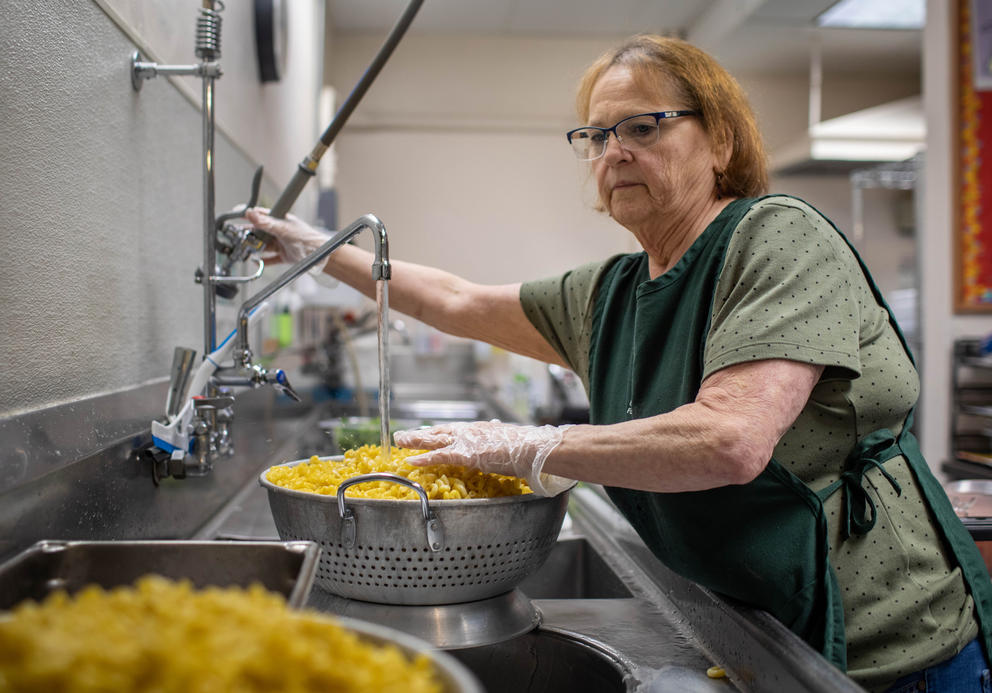Riccelli had hoped that Washington could join two states, California and Maine, which became the first to permanently adopt universal school meals after the end of a federal program that temporarily expanded free school meals for all public K-12 students nationwide.
The summer of 2022 saw the end of that universal free breakfast and lunch program, which was a COVID-19 financial relief program to help address the job losses and other financial burdens faced by families during the pandemic. That program enabled Washington schools to offer meals at all schools for free during the 2020-21 and 2021-2022 school years.
Many families in Washington, and across the country, lost access to free school meals after federal funding ended and the nation returned to a needs-based program.
However, despite the end of the pandemic-relief program, about 1,200 Washington schools were able to keep providing free meals for all, after the state in 2022 approved funding for districts to cover the costs of running the universal meal programs in certain schools or groups of schools if more than 40% of families qualify for federal financial or food assistance.
The law that both mandated and assisted school districts’ participation in the United States Department of Agriculture’s Community Eligibility Provision doubled the number of Washington schools that could offer free meals for all.
Nearly two dozen of those 700 new schools are in the Auburn School District, which started offering free meals to all students this school year, after it qualified under the state’s eligibility law. About 61% of students in the district live in a low-income home, according to district data.
“There are schools that are serving three times as many kids,” said district child nutrition coordinator Ben Atkinson. “To me that showed that there was a financial need, or that it made parents’ lives easier. It showed the need was there, and now we are meeting it.”
The program also makes life easier for school administrators. Atkinson said that before the pandemic, it was a full-time job to process the thousands of applications for free meals, in addition to the effort of following up with families of students who had insufficient funds on their school lunch accounts.
“We spent a lot of time trying to get families and students to pay what we thought we were owed. If a student hadn’t returned the form to qualify for a free meal, we wouldn’t stop them from getting a free meal, but there would be a negative balance on their account. We spent a lot of time trying to recoup that money,” Atkinson said.
That’s now a thing of the past in Auburn.
“We can dedicate our staff time to doing what I think is more important, instead of asking parents to jump through those hoops to get a free meal or asking them to repay a student meal debt,” Atkinson said. “We can concentrate on cooking better food, and dedicate staff time to cooking food from scratch.”
This legislative session, the House and Senate bills had initially proposed further expansion of universal free meals, so all public school students in Washington would have access. This would have cost the state about $96 million a year.
House Bill 1238 has now been scaled back to a phased expansion of the program over the next few years, so that by the 2024-25 school year, K-5 elementary schools could offer universal free breakfasts and lunches if up to 30% of students at the school qualify for free or reduced lunch. That would reduce the statewide costs of expansion to $17 million a year – or $55 million over four years.
If the bill passes, by 2024-25 about 634,000 students statewide at 1,430 schools could access free breakfasts and lunches at their schools – about 58% of students statewide.
This change would also help families who don’t quite qualify for federal assistance programs but who are still struggling.
“There are always cutoff lines. A paycheck away, a lost job, something that would push them into qualifying,” Riccelli said.
Children of struggling families who for various reasons do not apply for federal aid also would benefit, as would middle-income families facing rising food costs due to inflation.
“The other piece is a parent trying to get off to work, making sure they’re not feeling guilty about sending them to school and knowing they’ll get a quality meal,” Riccelli said. “I think there’s a lot of benefits to this.”
Riccelli said he will continue to push for universal school meals despite this year’s compromise.
“I think they are some of the best dollars we can spend,” he said.
Atkinson of the Auburn School District noted that schools don’t charge students, for instance, for lockers or school materials.
“To me it seems funny that we pick this one piece of the day and we charge kids, or force their parents or guardians to go through a bunch of red tape just to get a sandwich. It doesn’t seem fair to me. It doesn’t seem equitable,” Atkinson said.



